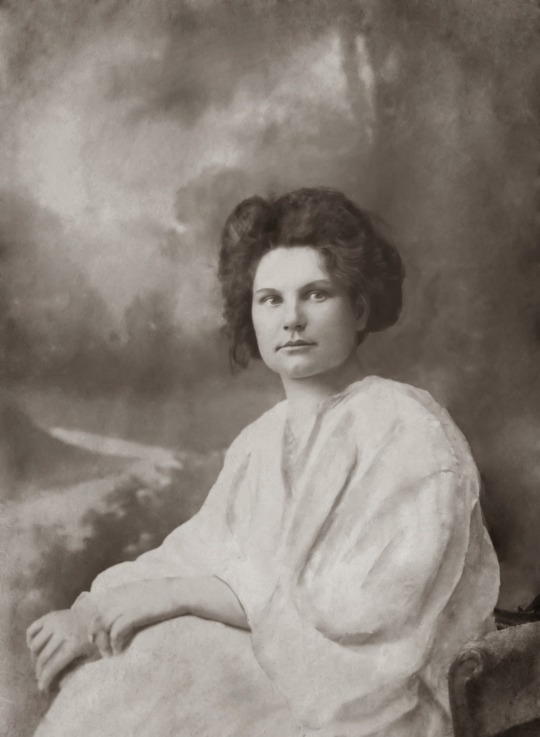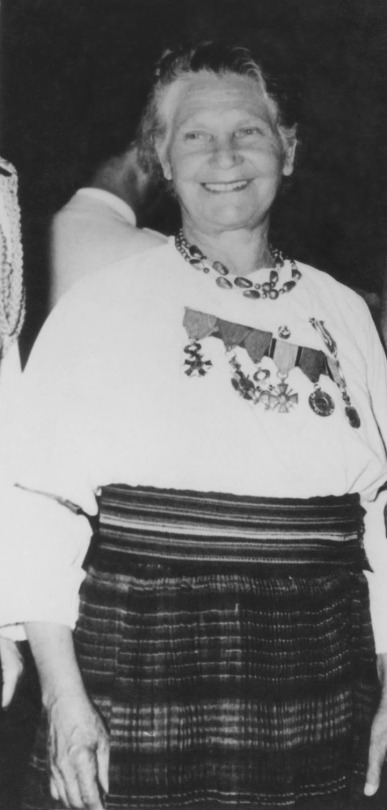#historic photograph
Milunka Savić - World War I’s most decorated woman
Milunka Savić (c.1890-1973) was born in Serbia. She took her brother’s place and enlisted in the army under the name Milun Savić during the Second Balkan War. During the Battle of Bregalnica, Milunka was leading her tenth charge at the head of a squad of men when she was wounded when an enemy grenade blew up at her feet.
Her real identity was discovered and Milunka was brought to her commanding officer who offered her to join the nursing corps. Milunka refused. She told him that she wouldn’t accept a position that didn’t allow her to bear arms to defend her country. Her superior thus promoted her to junior sergeant and allowed her to stay in the infantry.
Milunka was thus openly fighting as a woman when the First World War began. She was part of a prestigious unit nicknamed “The Iron Regiment”. During the Battle of the Kolubara river (3-9 December 1914), she single-handedly assaulted an Austrian trench, hurling grenades, and subsequently captured 20 Austrian soldiers. Milunka excelled at throwing grenades at used them to destroy the enemy machine guns. Her performance was so impressive that she was later nicknamed “The Bomber of Kolubara”. Milunka later told the press that during her childhood in the countryside, she spent a lot of time herding sheep. She and her young comrades played at hitting different targets by throwing stones. This was how she acquired her skills.
She went on to participate in several battles and fought alongside the French soldiers on the Macedonian front. In 1916, she single-handedly captured 23 Bulgarian soldiers. She was hospitalized at least 3 times and earned many awards for her performance in combat. Among the decorations Milunka received were the French Légion d’honneur, the Croix de guerre, the Cross of St. George, the Most Distinguished order of Saint Michael and Saint George and the Serbian Medal for Bravery.

(Milunka in uniform in 1917)

Milunka’s case wasn’t unique. A young woman from Belgrade named Sofija Jovanović served like her in the Second Balkan War and the First World War. Remarkably cultivated, Sofija attracted the attention of the foreign press and earned the nickname of “Serbian Joan of Arc”. She too received a number of Serbian medals for her merits.

(Sofija Jovanović)
Two school teachers named JelenaŠaulić and Ljubica Cakarevic also fought among the Serbian troops. A Slovenian woman, Antonija Javornik, was also part of the Serbian army, as was the British womanFlora Sandes .

(Jelena Šaulić)

(Antonija Javornik)
Milunka married after the war and gave birth to a daughter, but the union didn’t last long. She afterward adopted three other girls. Since she had never been to school, Milunka had to work as a cleaning lady, but faced the situation with courage and dignity. She managed to send all her daughters to school and helped thirty children, many of them from her natal village, to get a proper education as well.
During the Second World War, Milunka still found a way to help her country. She notably hid antifascists in her home and nursed them, creating a kind of secret hospital. She died in Belgrade in 1973 and was buried with military honors. A street in Belgrade is named after her.

(Milunka in 1966)
References:
Breverton Terry, Breverton’s First World War Curiosities
Larson Carmichael Jacqueline, Heard Amid the Guns, True Stories from the Western Front, 1914-1918
Toler Pamela D., Women warriors: an unexpected history
Post link


